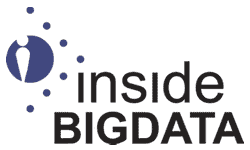
- 4 January, 2022
2022 Trends in Intelligent Bots: Knowledge Worker Empowerment
Dr. Jans Aasman and Dr. Richard Wallace are both quoted extensively in this article
Whether in the form of Robotic Process Automation, chatbots, or some other type of digital assistants, the presence of intelligent bots is substantially increasing across the data ecosystem … in more ways than one.
The diversification of the number of tasks these bots can perform is multiplying, as is the intrinsic complexity of those jobs, which unambiguously benefits knowledge workers worldwide.
Whether dynamically engaging in natural language interactions with contact center agents, for example, or issuing and answering queries from a certified knowledge base, intelligent bots are integral for not only automating these data exchanges, but also implementing the ensuing action required to complete workflows.
……
“The real story here is sure, there have been some amazing advances in machine learning with respect to Natural Language Processing, and the results of things like GPT-3 are super impressive,” acknowledged Franz Knowledge Engineer Richard Wallace. “But there’s still a need for the old fashioned symbolic AI Natural Language Processing using rules and hand-crafting those rules, especially when you need to provide contractual or legal guarantees about what the results will be.”
……
As Wallace’s quotation suggests, linguistic reductions are rooted in symbolic reasoning and a codified set of rules for taking certain inputs, such as “I just”, and transferring them to defined outputs which, in this case, would simply be “I”. According to Wallace these rules are recursive, enabling a series of reductions to be applied to any sentence to extract its basic meaning. This utility immensely benefits chatbots because it “applies to almost all spoken language and to Natural Language Processing in general,” noted Franz CEO Jans Aasman. Moreover, because reduction rules are orthogonal to taxonomies, they’re horizontally applicable and as useful for healthcare use cases as they are for insurance ones or any business domain’s.
Read the full article at Inside Big Data.







